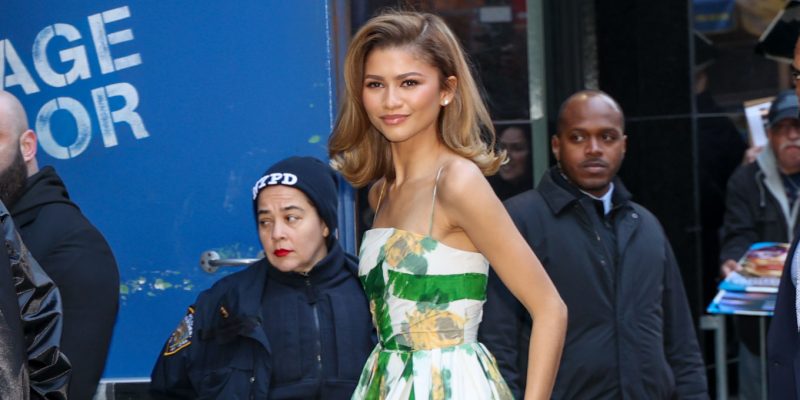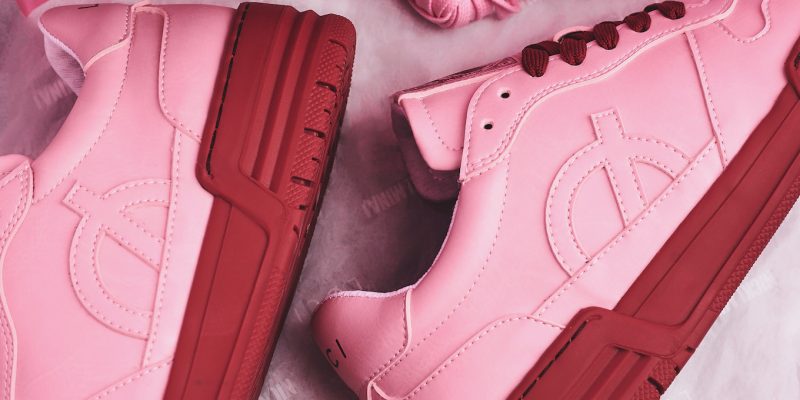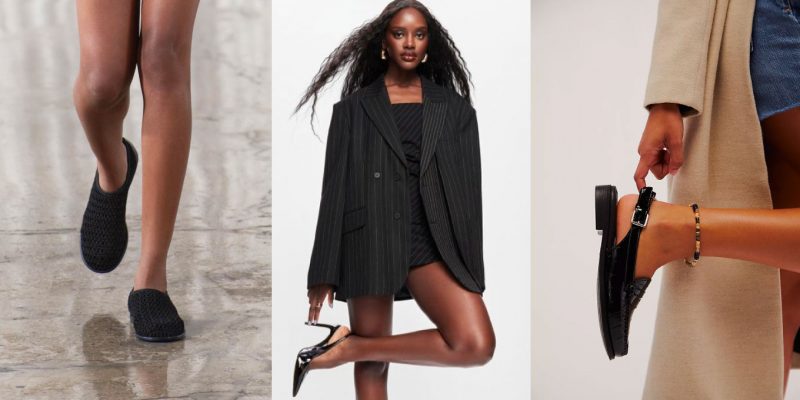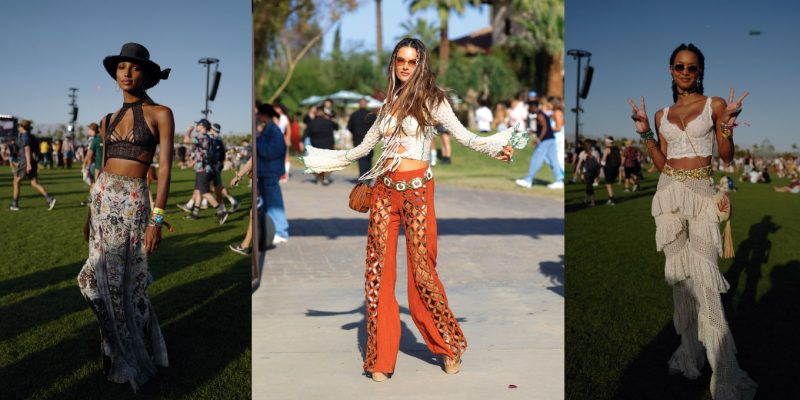Fashion
Nina Ricci Creative Director Harris Reed Is Making His Mark on the Fashion Industry
“It’s about really going in and constantly trying to outdo [myself ] and be bolder—which makes it fun.”
by : Joanna Fox- Mar 6th, 2024

HANNA MOON
When Harris Reed pops up on my screen from the Nina Ricci atelier in Paris, he’s wearing a white T-shirt with the brand’s logo across the front. “I’m so sorry I’m wearing a T-shirt,” the British-American designer says. “I just spilled an entire smoothie on my blouse.” It’s a winter Monday morning, and I can relate to that first-day-of-the-week energy. “It’s definitely a fucking Monday,” he says with a laugh. “Crystals on standby.”
It’s hard not to instantly fall in love with Reed. The 27-year- old’s down-to-earth real-talk demeanour is a breath of fresh air in an industry where everyone comes across as reserved, perfect and put together. Not that Reed isn’t channelling some serious glam. His signature silky-smooth reddish-blond long hair, love of flared pants, heeled platform boots and penchant for blurring the lines of what’s considered masculine and what’s considered feminine definitely make him stand out from the crowd. But it’s less about how Reed looks and more about his infectious energy and the message of inclusivity he conveys with everything he does. It’s like he’s buzzing at a higher frequency, bubbling over with enthusiasm and creativity and constantly pushing fashion boundaries in the realms of gender norms and representation.
Born in Los Angeles to parents Nick and Lynette Reed—an Oscar- winning British documentary film- maker and former model turned candle maker and boutique owner, respectively—the designer went to London’s Central Saint Martins, whose graduates include Alexander McQueen and John Galliano. While Reed was still a student, he dressed Solange Knowles and Harry Styles, and shortly after completing his degree in 2020, he and his namesake brand were catapulted to the runway. The queer designer made waves again when he put Styles in a tailored suit attached to a hoop skirt draped in tulle and pink satin garlands for the December 2020 issue of Vogue. Reed’s crew of high-profile friends and cli- ents (including Ashley Graham, Beyoncé, Nicki Minaj, Adele, Selena Gomez, Shakira, Miley Cyrus and Kaia Gerber—a lineup that would rival Taylor Swift’s squad) helped propel his designs further into the spotlight, and in September 2022, he was named creative director of Nina Ricci, becoming the youngest designer in the brand’s 91-year history.
Now, with two very-well-received Nina Ricci collections and the release of his first fragrance, Nina Le Parfum, under his belt and with preparations for his third Paris Fashion Week under way, Reed is keeping everything in perspective. “The point of this job was never to be like, ‘Three seasons and then I’m going to just sip my coffee and smoke my fake lavender cigarettes,’” he says. “It’s about really going in and constantly trying to outdo [myself ] and be bolder—which makes it fun.”
 Nina Ricci
Nina RicciOn top of balancing Nina Ricci and his namesake brand, he just released his first book, Fluid: A Fashion Revolution, which explores the world of gender-defying fashion through his lens. “I am gobsmacked that it’s a real, tactile thing,” says Reed. “I always wanted to release a book, [but] I thought it’d be much later in my career.” We recently spoke with the talented designer about his busy life, his first two Nina Ricci shows, his first fragrance with the brand and the importance of creating an open- minded, diverse fashion industry.
CAN YOU TELL ME HOW THE ROLE WITH NINA RICCI CAME ABOUT?
“At the time, I was in a place where I was generally looking for growth within myself. I had my label, which I still have, but I had this moment where I thought that I could give more in a creative space. In one month, I was approached by three different houses—Nina Ricci being one of them. I went to meet them all, and Nina felt right. I developed a deep obsession with finding out who Nina really was and what the brand is really about. I also very much vibed with the people in this atelier, so it was a very beautiful experience of seeing myself in a brand.”
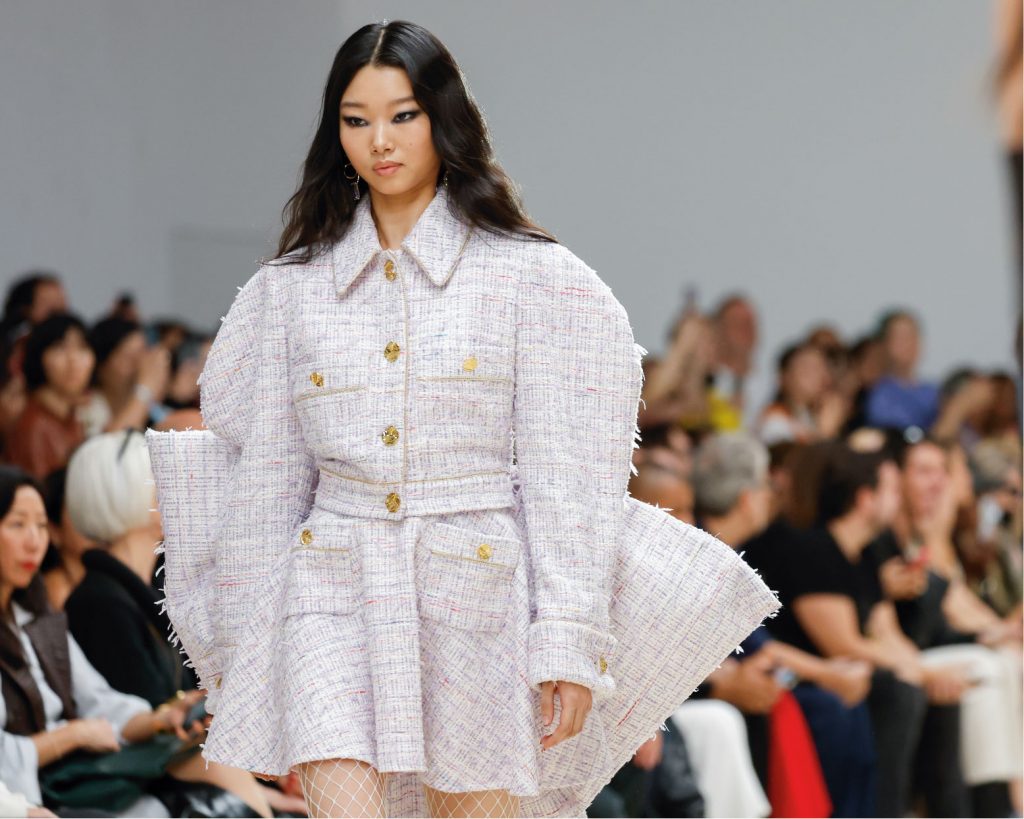 Nina Ricci
Nina RicciWHAT WAS IT LIKE TO PRESENT YOUR SECOND COLLECTION WITH THE BRAND?
“I was a lot more anxious. I’ve always been very clear, even when I went for the job at Nina Ricci, about what my three-show plan is. The first one was always—in a polite way—[about the fact that] Nina is dead and she needs to be reawakened and people need to become refamiliarized with who she is. So, for me, the first show was like, ‘Make a splash, make it colourful and make it exactly who I am.’ With the second one, we grew the team. I got to hire people I trust, and I grew the relationship with people who have been there for 20 years. [I got to] build more of the wearable wardrobe of Nina Ricci. It still [has] the flashy, colourful fabulousness that I’m known for and that the house is, hopefully, becoming re-known for, with the colours, the polka dots, the stripes and all these grand archival staples that had been kind of lost over the years. It was very nerve-racking to kind of go from those ‘Let’s make a big splash’ VIP moments over the years to a space where we need to also show what this wardrobe looks like. So this one was a bit like trying to make sure that we’re representing this everyday person but still doing it the fabulous camp Nina Ricci way.”
 Nina Ricci
Nina RicciDO YOU FIND IT’S GETTING EASIER OR HARDER?
“I would say both. It’s easier because we’re figuring out what the language of the brand is. When I started, I went up to the atelier, which is still the original one in the building, and there were no pat- terns, no blocks and no mannequins—there was nothing. Now I walk up there and we have the suiting department, we have all the different jackets and we have our babydolls. Now I can be like, ‘We’re doing evening—this is the Nina shoulder, and this is the Nina skirt.’ It’s beautiful to have these DNA codes that we didn’t have [before]—it makes the design easier. But it also becomes harder because the audience becomes wider. We went from zero stores to, like, 120 stores so quickly. So I’m constantly challenging myself on the modernity of what [the Nina] woman looks like and exploring her ever-changing and complicated [persona]. But I like a challenge.”
“I love that people are getting that energetic sense of joy from putting on the garments, and I think that’s the most I could ever ask for with this brand.”
YOUR CLOTHES ARE SO MUCH FUN. WATCHING YOUR SHOW IS SO MUCH FUN. EVERYTHING EXUDES THIS SENSE OF JOY.
“When you go into a brand and you’re redefining what the customer looks like and what people expect, it’s so difficult because there’s so much rigidity and calculation. I was just like, ‘I want the clothes to be fun; I want the person to feel fun.’ What I love about Nina Ricci is that we’re not Chanel and we’re not Dior—we’re a name that is known in the same spaces, but we’re not that large. We’re not paying anyone to wear Nina Ricci on the red carpet; we’re just building our family of starlets. They’re people who genuinely want to have a joyous, fun fucking night, like Florence Pugh, Harry Styles and Priyanka Chopra. I love that people are getting that energetic sense of joy from putting on the garments, and I think that’s the most I could ever ask for with this brand.”
YOUR SHOW HAD ONE OF THE MOST DIVERSE CASTS OF MODELS I SAW DURING PARIS FASHION WEEK. HOW IMPORTANT IS IT TO YOU TO REPRESENT EVERYONE?
“In Paris, it’s not so easy—I’m trying to push the status quo forward. [In] London, that was never really a big conversation—like, of course you have to have gender diversity, body diversity, racial diversity and age diversity. It was just a part of my ethos. Coming to Paris, I didn’t realize that that was something that not that many people were doing. For me, it was super integral to be able to showcase that a woman is everything—there was nothing tokenistic. That’s just what I do as a designer—make you feel joyous, make you feel accepted.”
Newsletter
Join our mailing list for the latest and biggest in fashion trends, beauty, culture and celebrity.
Read Next

Beauty
The Best Met Gala Beauty Looks Of All Time
From Taylor Swift's 'Bleachella' era to Rihanna's iconic 2011 braids, meet the best beauty moments in Met Gala history.
by : Katie Withington- Apr 26th, 2024

Culture
Benny Blanco Says He Fell in Love With Selena Gomez Without ‘Even Noticing’ It
Allow Benny Blanco to tell the straight-from-a-rom-com story of how he realized his feelings for his girlfriend and longtime friend.
by : Alyssa Bailey- Apr 26th, 2024
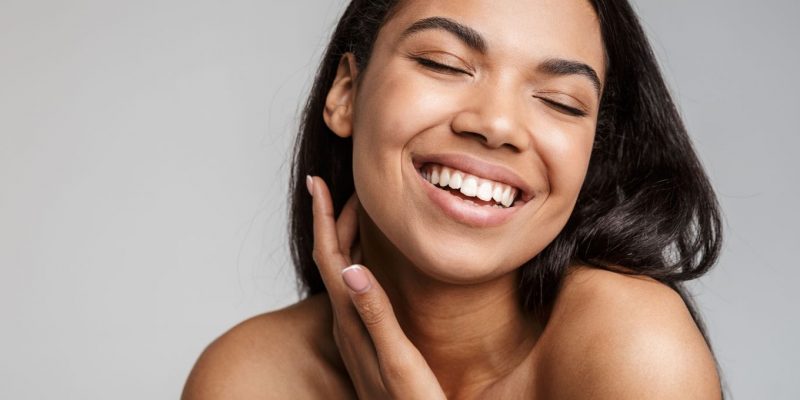
Beauty
ELLE Tried It: Five Serums to Up Your Skincare Game
Members of the ELLE team tested Avène Dermatological Laboratories’ five new concentrated serums. Here's what they thought.
by : ELLE Canada- Apr 25th, 2024

